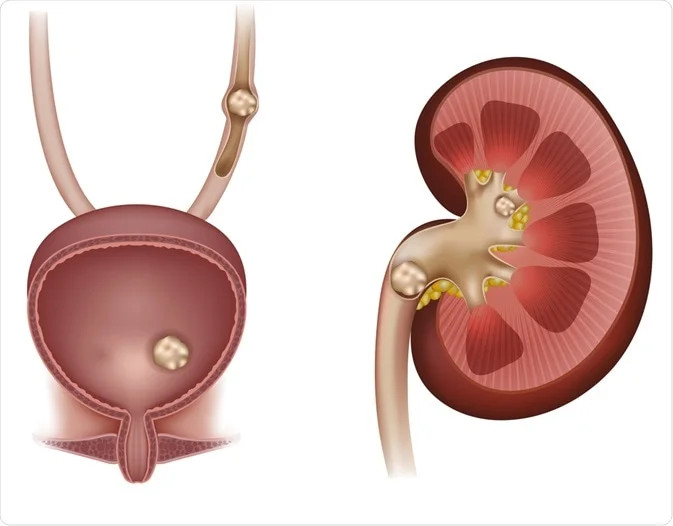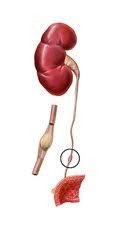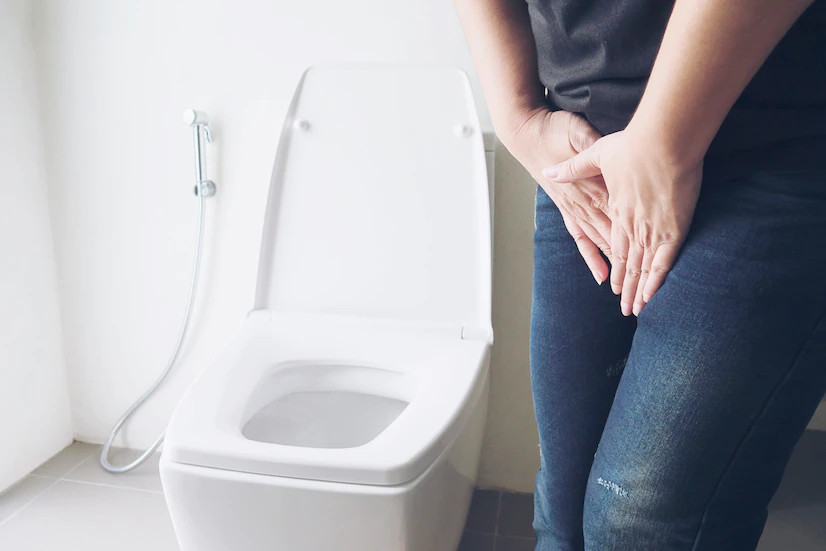Definisi
Uretritis adalah kondisi dimana uretra mengalami peradangan atau iritasi. Uretra adalah saluran akhir untuk mengeluarkan urin dari kandung kemih. Pada laki-laki, saluran uretra juga menjadi saluran keluarnya sperma dari sistem reproduksi. Uretritis akan menimbulkan rasa sakit atau nyeri saat berkemih. Penyebab paling sering uretritis adalah infeksi bakteri yang dapat terjadi karena infeksi menular seksual (IMS). Laki-laki dan perempuan dapat mengalami penyakit uretritis.
Penyebab
Uretritis dapat disebabkan oleh infeksi maupun non infeksi.
Infeksi
Infeksi dapat disebabkan oleh bakteri atau virus dan sering dikaitkan dengan infeksi menular seksual. Uretritis yang disebabkan oleh infeksi dapat dibagi menjadi dua yaitu uretritis gonore dan uretritis non gonore. Beberapa jenis mikroorganisme yang paling sering menimbulkan uretritis adalah :
- Neisseria gonorrhoeae. adalah bakteri gonococcus yang menyebar melalui hubungan seksual dan menyebabkan penyakit uretritis gonore.
- Chlamydia trachomatis. Bakteri ini juga ditularkan melalui hubungan seksual.
- Mycoplasma genitalium
- E. coli yang berada di saluran cerna
- Virus Herpes Simplex (HSV) 1 dan 2
- Trichomonas vaginalis
- Human papillomavirus (HPV)
- Cytomegalovirus (CMV).
Non-infeksi
Selain infeksi, uretritis juga dapat disebabkan kondisi lain. Seperti trauma uretra akibat kateter atau benda asing lain, iritasi di area genital akibat penggunaan pakaian dalam yang ketat, penggunaan sabun atau produk yang dapat mengiritasi area genital, aktivitas fisik seperti bersepeda dalam jangka waktu lama, dan perempuan menopause yang mengalami perubahan hormonal. Kondisi ini dapat membuat perubahan pada dinding saluran uretra dan memicu peradangan.
Faktor Risiko
Uretritis dapat terjadi pada laki-laki dan perempuan. Risiko akan meningkat terutama pada usia muda dan aktif secara seksual. Uretritis lebih rentan terjadi pada perempuan karena saluran uretra berada dekat dengan vagina dan dubur (anus). Beberapa faktor risiko lain yaitu :
- Memiliki banyak pasangan seksual
- Berhubungan seksual secara tidak aman, yaitu tidak menggunakan kondom
- Pernah mengalami penyakit menular seksual sebelumnya
- Pernah dipasang kateter urin sebelumnya
Gejala
Gejala Uretritis dapat berbeda antara laki-laki dan perempuan.
Laki-Laki
Gejala yang dapat dialami oleh laki-laki adalah :
- Nyeri dan rasa terbakar saat berkemih. Terasa lebih parah di pagi hari.
- Gatal dan panas di ujung penis
- Muncul darah pada air mani atau urin
- Keluar cairan dari uretra berwarna kuning, hijau, coklat, atau darah.
- Lebih sering buang air kecil (BAK).
- Nyeri pada buah zakar (skrotum)
Perempuan
Sementara pada perempuan banyak yang tidak menunjukkan adanya gejala. Tapi gejala yang dapat muncul berupa :
- Lebih sering buang air kecil (BAK)
- Rasa tidak nyaman, nyeri selama berkemih
- Nyeri atau rasa terbakar di ujung uretra
- Keluar cairan abnormal dari vagina
- Nyeri saat berhubungan seksual
- Nyeri perut bagian bawah
Diagnosis
Diagnosis Uretritis dapat ditegakkan oleh dokter melalui penilaian gejala dan hasil pemeriksaan. Gejala yang dirasakan sesuai dengan risiko yang dimiliki. Dokter juga akan menanyakan faktor risiko lebih mendalam seperti pernah hubungan seksual sebelumnya. Pemeriksaan fisik yang dilakukan oleh dokter meliputi pemeriksaan perut dan area genital. Dokter juga akan melakukan pemeriksaan tambahan untuk mengetahui mikroorganisme yang menginfeksi.
- Tes urin atau urinalisis. Urin akan diperiksa di bawah mikroskop untuk dilihat bakteri yang terkandung di dalamnya.
- Pewarnaan gram. Pemeriksaan ini membutuhkan sampel berupa urin dan swab ujung uretra.
- Kultur urin. Fungsi dari pemeriksaan ini untuk menumbuhkan bakteri yang menginfeksi.
- Pemeriksaan darah. Meskipun jarang dilakukan, dokter dapat melakukan pemeriksaan ini ketika dicurigai ada penyakit menular seksual lain. Pemeriksaan yang biasanya dilakukan adalah pemeriksaan HIV/AIDS dan sifilis.
Bila ada kecurigaan Uretritis terjadi karena trauma uretra, dokter dapat melakukan pemeriksaan lain seperti :
- Penggunaan sistoskopi yang dimasukkan ke dalam uretra untuk melihat dinding uretra secara langsung. Ini digunakan bila dicurigai adanya radang akibat penyakit lain.
- Penggunaan kateter untuk tetap membuka saluran uretra agar urin dapat keluar.
- Kateter suprapubic yang baru akan dilakukan bila kateter dan sistoskopi tidak dapat masuk. Biasanya digunakan pada kasus adanya benda asing atau batu yang memberikan gejala mirip Uretritis.
Tata Laksana
Uretritis yang disebabkan oleh infeksi bakteri dapat sembuh dengan pengobatan antibiotik yang diberikan dokter. Beberapa jenis antibiotik yang sering digunakan untuk mengobati Uretritis adalah doksisiklin, azithromycin, atau ceftriaxone. Uretritis yang disebabkan infeksi trichomonas biasanya diberikan antibiotik metronidazole. Uretritirs karena herpes simplex virus dapat diobati dengan acyclovir, famciclovir, atau valacyclovir. Ada beberapa pilihan antibiotik lain yang dapat diberikan oleh dokter.
Bila Uretritis disebabkan oleh infeksi menular seksual, pasangan anda harus diberikan pengobatan juga. Hal ini bertujuan untuk mencegah infeksi berulang pada Anda dan pasangan. Setelah 3 bulan sejak mulai pengobatan, sebaiknya lakukan pemeriksaan ulang untuk memastikan infeksi sudah hilang. Hindari berhubungan seksual selama masa pengobatan Anda dan pasangan. Hubungan seksual baru boleh dilakukan ketika pengobatan sudah selesai dan dinyatakan sembuh oleh dokter.
Beberapa kasus Uretritis yang tidak diketahui penyebabnya akan tetap diberikan antibiotik. Uretritis yang tidak disebabkan oleh infeksi akan mendapatkan penanganan sesuai dengan penyebabnya.
Komplikasi
Komplikasi akan terjadi apabila Uretritis tidak ditangani dengan baik. Infeksi dapat menyebar ke saluran lain seperti kandung kemih, ureter, dan ginjal. Pada perempuan, infeksi dapat menyebar ke organ reproduksi.
- Infeksi ginjal (pielonefritis) yang dapat menyebabkan kerusakan organ permanen.
- Sepsis atau infeksi yang sudah menyebar ke darah.
Laki-Laki
- Prostatitis atau peradangan kelenjar prostat pada laki-laki
- Penyempitan saluran uretra laki-laki
- Epididimitis atau peradangan saluran epididymis pada laki-laki. Saluran epididimis berfungsi untuk menyalurkan sperma dari testis ke luar tubuh. Peradangan dapat menyebabkan kemandulan.
Perempuan
- Pelvic Inflammatory Disease (PID) yang terjadi pada perempuan. Infeksi yang naik ke rahim dan tuba falopii dan dapat menyebabkan kemandulan. Nyeri pelvis berkepanjangan pada perempuan. Dapat disertai nyeri saat berhubungan seksual. Risiko kehamilan di luar rahim (ektopik) akan meningkat.
Pencegahan
Beberapa cara untuk mencegah Uretritis dapat dilakukan di rumah. Kuncinya adalah menjaga kebersihan diri dan perilaku seksual yang aman. Contoh pencegahan Uretritis yang dapat diterapkan adalah :
- Hindari berhubungan seksual dengan banyak pasangan
- Gunakan kondom ketika berhubungan seksual
- Lakukan pemeriksaan rutin bersama pasangan seksual ke dokter.
- Lindungi yang lain. Bila anda terdiagnosis memiliki infeksi menular seksual beritahu pasangan atau orang yang berpotensi tertular.
- Jaga kebersihan area genital
- Banyak minum air putih
- Hindari menahan buang air kecil (BAK)
- Buang air kecil setelah berhubungan seksual
- Hindari makanan yang banyak mengandung zat asam, seperti alkohol, minuman bersoda.
- Hindari penggunaan kontrasepsi dengan spermisida karena berpotensi mengiritasi uretra
- Hindari penggunaan sabun atau produk yang sensitif di area genital
Kapan Harus ke Dokter?
Anda harus segera berobat ke dokter, dokter spesialis kulit dan kelamin (Sp.KK) atau dokter spesialis dermato-venerologi (Sp.DV) apabila mengalami gejala yang sudah disebutkan di atas. Selain mencegah terjadinya komplikasi, pengobatan yang cepat dan tepat dapat mengurangi risiko infeksi berulang. Bila nyeri dirasa memberat, tidak dapat buang air kecil, disertai adanya demam, sebaiknya segera berobat agar mendapat penanganan segera.
Mau tahu informasi seputar penyakit lainnya? Cek di sini, ya!
- dr Anita Larasati Priyono
Uretritis: Causes, Symptoms, and Treatment. WebMD. (2022). Retrieved 17 June 2022, from https://www.webmd.com/a-to-z-guides/Uretritis-symptoms-causes-treatments.
Uretritis: Practice Essentials, Pathophysiology, Etiology. Emedicine.medscape.com. (2022). Retrieved 17 June 2022, from https://emedicine.medscape.com/article/438091-overview.
Uretritis: Causes, Treatment, & Prevention. Healthline. (2022). Retrieved 17 June 2022, from https://www.healthline.com/health/Uretritis.
Young, A., Toncar, A., & Wray, A. (2022). Uretritis. Ncbi.nlm.nih.gov. Retrieved 17 June 2022, from https://www.ncbi.nlm.nih.gov/books/NBK537282/.
Encyclopedia, M. (2022). Uretritis: MedlinePlus Medical Encyclopedia. Medlineplus.gov. Retrieved 20 June 2022, from https://medlineplus.gov/ency/article/000439.htm.











